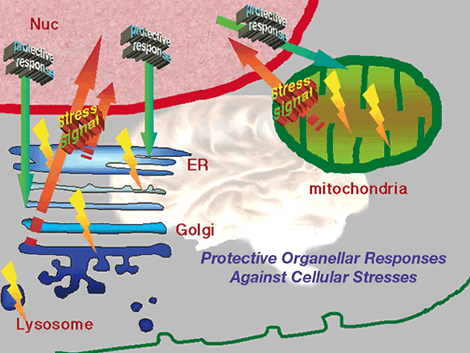|
|
| |
|
|
| |
| |


 |

The Project
Leader's Profile
Masaya
Tohyama (M.D., Ph.D.)
Dean, Professor , Department of Anatomy & Neuroscience,
Osaka University Medical School/
Graduate School of Medicine
In 1972, graduated from the Osaka University
School of Medicine and obtained M.D.
After working as an intern, in 1977,
obtained his PhD from Osaka University
Medical School (Neuroanatomy). In 1980,
appointed as Associate Professor in
at the Department of Neuroanatomy,
Institute of Higher Nervous Activity,
Osaka University Medical School. In
1985, appointed as Professor and Chairman,
Department of Anatomy & Neuroscience,
Osaka University Medical School. In
1997, appointed as Professor and Chairman,
Department of Anatomy & Neuroscience,
Graduate School of Medicine, Osaka
University. Since 1997, he holds the
current position. Specialized in Molecular
mechanism of neuronal death, regeneration
of central nervous system and Schizopherenia.
He has received following Awards; Beltz
Prize in Japan (1991), JAPAN Bio Business
Competition the most valuable Prize
(2000), Highly Cited Researchers in
Neuroscience by ISI (since 2001) etc.
 |
Project Leader:
|
Masaya Tohyama, M.D., Ph.D.,
Dean, Professor, Department
of Anatomy & Neuroscience,
Osaka University Medical School/
Graduate School of Medicine
|
| Research Members: |
Yasutake Mori,M.D., Ph.D., Associate Professor, Department of Anatomy & Neuroscience, Osaka University Medical School/ Graduate School of Medicine
|
| Research Collaborators: |
Shingo Miyata, Ph.D., Assistant Professor, Department of Anatomy & Neuroscience, Osaka University Medical School/ Graduate School of Medicine
Shinsuke Matsuzaki, M.D., Ph.D., Assistant Professor, Department of Anatomy & Neuroscience, Osaka University Medical School/ Graduate School of Medicine
Tsuyoshi Hattori, M.D., Ph.D., Assistant Professor, The Osaka-Hamamatsu Joint Research Center For Child Mental Development
Natsuko Kumamoto, M.D., Ph.D., Assistant Professor, Department of Anatomy & Neuroscience, Osaka University Medical School/ Graduate School of Medicine
Tsuya Taneda, Ph.D., Post-doctoral fellow of the 21st Century COE Program, Department of Anatomy & Neuroscience, Osaka University Medical School/ Graduate School of Medicine
Many others such as postdoctoral fellows, graduate students, and M.D./ Ph.D. course students of Department of Anatomy & Neuroscience, Osaka University Medical School/ Graduate School of Medicine
|
|



 |
| I) |
Molecular Mechanism
of Neuronal Disorders
|
| 1. |
Recently, we reported that neuronal
death occurring in neurodegenerative
disorders(ND) such as Alzheimer's Disease(AD)
etc. has its origin in the endoplasmic
reticulum (ER). We focus on the mechanisms
of organelle-specific cell death associated
with several ND through promoting research
into the response to the accumulation
of aberrant proteins in organelle such
as ER. |
| 2. |
Recently, Disrupted-In-Schizophrenia
1 (DISC1) was identified as a novel
gene disrupted by a translocation that
segregated with schizophrenia in a
Scottish family. We identified some
molecules as an interacting partner
of the DISC1. We aim to elucidate the
molecular mechanisms of schizophrenia
onset through the analyses of the interactors. |
| II) |
Molecular mechanisms regulating organellar
function to protect cells against cellular
stresses. |
| |
Cells are exposed
to various stresses under physiological
and pathological circumstances. To
protect cells against these stresses,
defensive molecular systems are activated
by transcriptional and translational
regulations. Here we propose that
these depend on not only the quantity
changes but also quality changes
of these molecules. In other words,
the post-transcriptional and post-translational
modifications are also important
to resist stresses. Such modifications
are regulated by the molecular mechanisms
depending on organellar functions.
We will reveal the organellar specific
stress response mechanisms by identifying
molecules that are involved in stress
specific signal transductions. In
addition, we will attempt to develop
the therapeutic strategies for stress
response related diseases, such as
neurodegenerative disorder. |
| III) |
Synapse response and protein synthesis |
| |
Our aim is to
elucidate molecular mechanisms which
allow synapse-specific responses
in different synapses located on
the same neuron. Since the CNS neurons
are supposed to accept different
species of signals simultaneously
at their different synapses, each
synapse is likely to make a response
to different stimuli from each of
the presynaptic termini. One of the
explanations for such locally separated
signal response in the neuron is
local protein synthesis by which
appropriate amount and species of
proteins are made from the localized
mRNA in the synapses. We focus on
the detailed mechanism which stabilizes
mRNAs in the postsynaptic regions
and regulates the expression of their
corresponding proteins. |



 |
| 1) |
Hattori T, Baba K, Matsuzaki S, Honda A, Miyoshi K, Inoue K, Taniguchi M, Hashimoto H, Shintani N, Baba A, Shimizu S, Yukioka F, Kumamoto N, Yamaguchi A, Tohyama M, and Katayama T. A novel DISC1-interacting partner DISC1-Binding Zinc-finger protein: implication in the modulation of DISC1-dependent neurite outgrowth. Mol. Psychiatry advance online publication, 2007. |
| 2) |
Okuda H, Manabe T, Yanagita T, Matsuzaki S, Bando Y, Katayama T, Wanaka A, and Tohyama M. Novel interaction between HMGA1a and StIP1 in murine terminally differentiated retina. Mol. Cell Neurosci., 33, 81-87, 2006. |
| 3) |
Ikenaka K, Miyata S, Mori Y, Koyama Y, Taneda T, Okuda H, Kousaka A, and Tohyama M. Immunohistochemical and western analyses of protein arginine N-methyltransferase 3 in the mouse brain. Neuroscience, 141, 1971-1982, 2006. |
| 4) |
Kumamoto N, Matsuzaki S, Inoue K, Hattori T, Shimizu S, Hashimoto R, Yamatodani A, Katayama T, and Tohyama M. Hyperactivation of midbrain dopaminergic system in schizophrenia could be attributed to the down-regulation of dysbindin. Biochem. Biophys. Res. Commun., 345, 904-909, 2006. |
| 5) |
Fujiwara T, Mori Y, Chu DL, Koyama Y, Miyata S, Tanaka H, Yachi K, Kubo T, Yoshikawa H, and Tohyama M. CARM1 regulates proliferation of PC12 cells by methylating HuD. Mol. Cell Biol., 26, 2273-2285, 2006. |
|
|
|
|
|
| PAGE TOP |
Copyright 2003 Osaka University. All Right Reserved.
Integrated functional analyses of disease-associated sugar chains and proteins, Osaka University

|
|
|
|
|